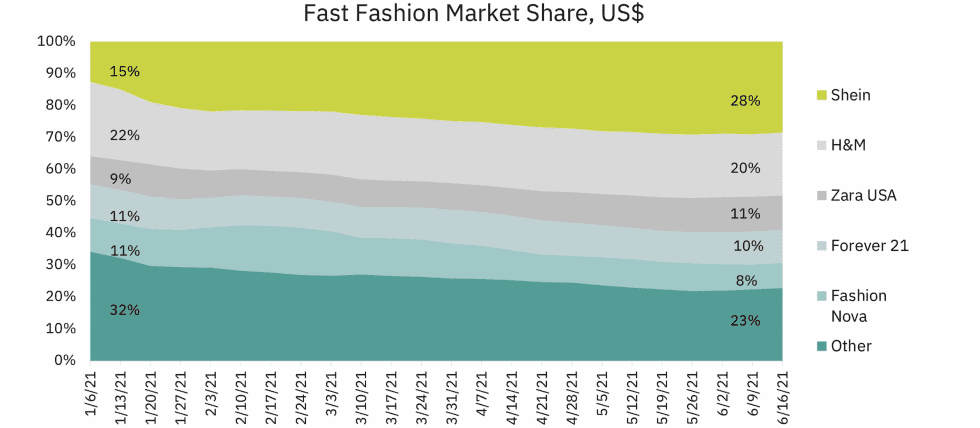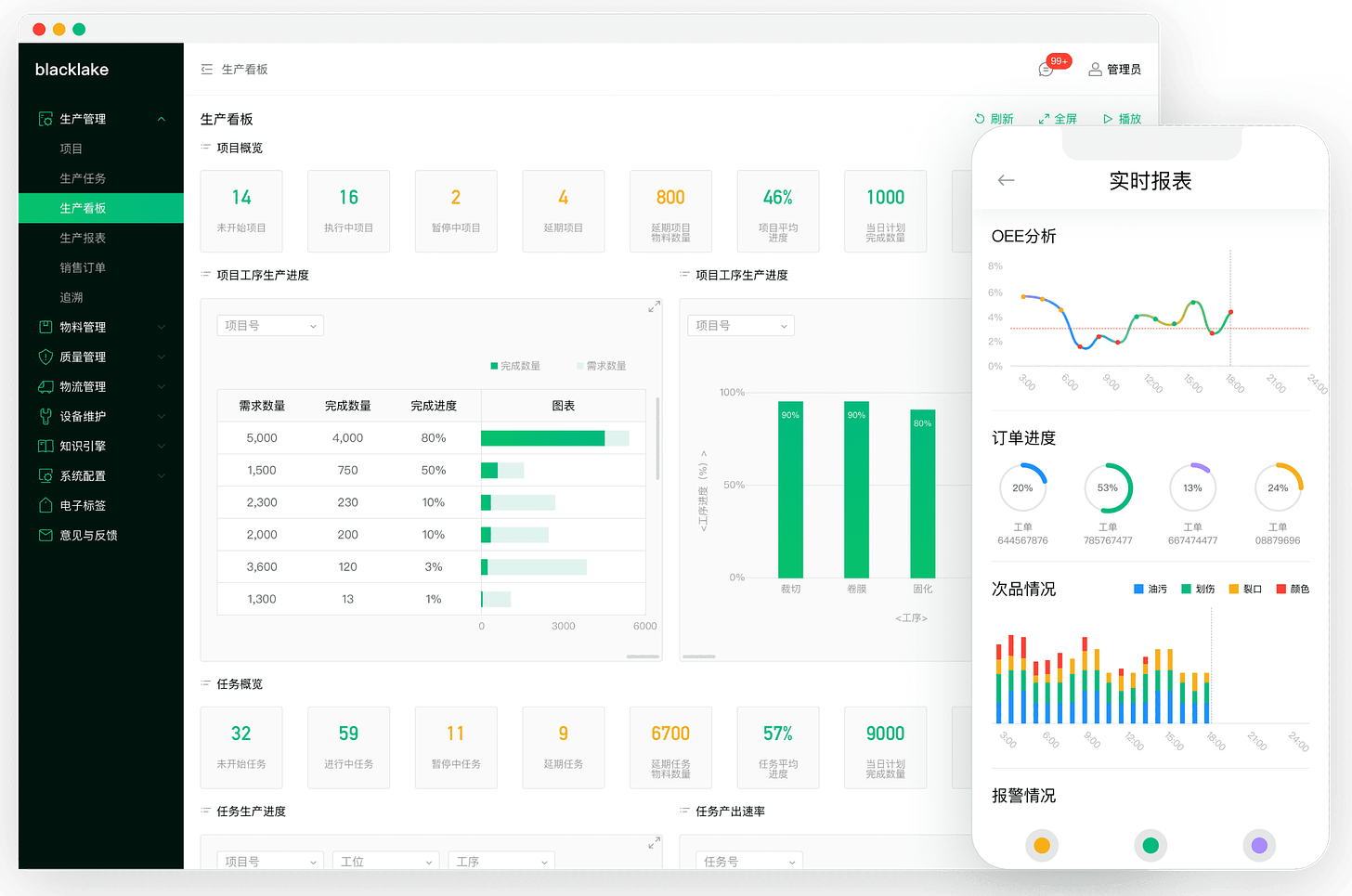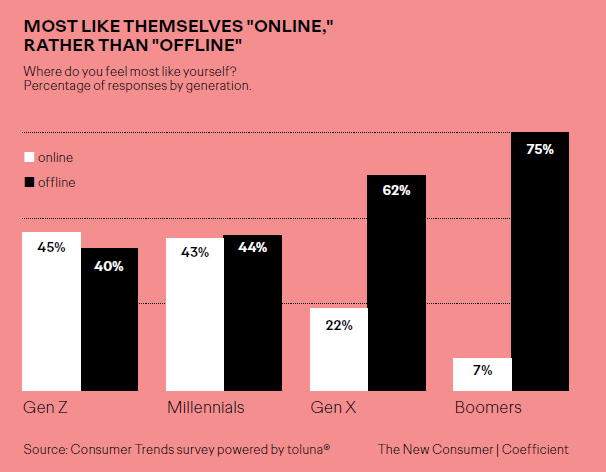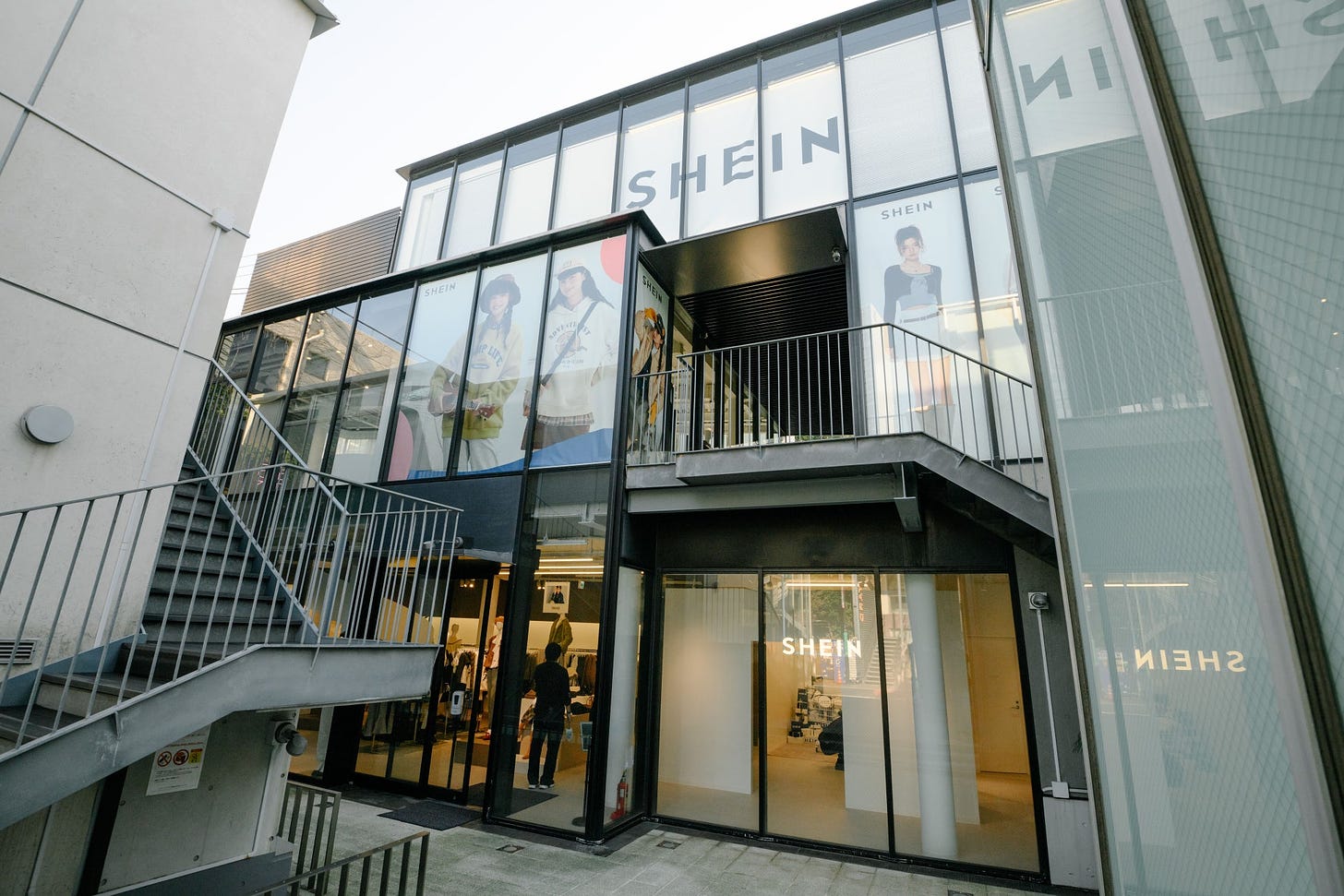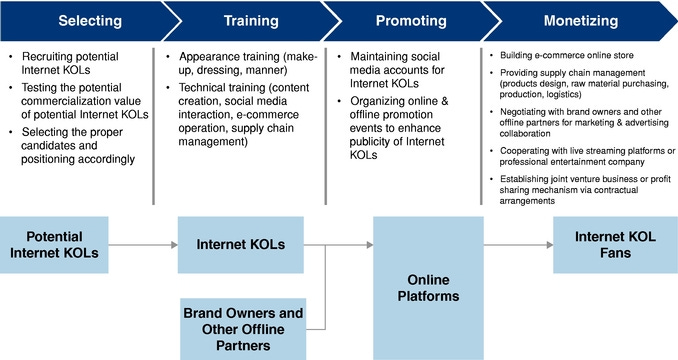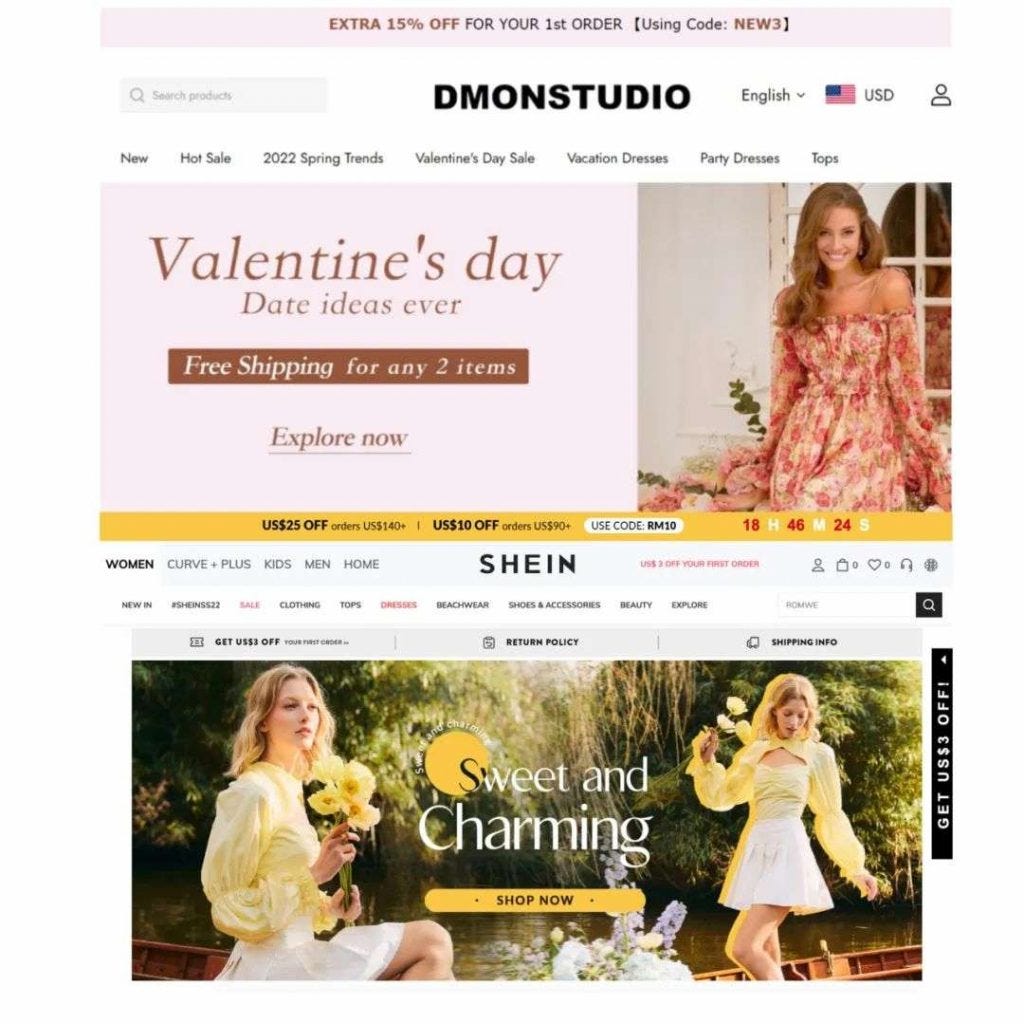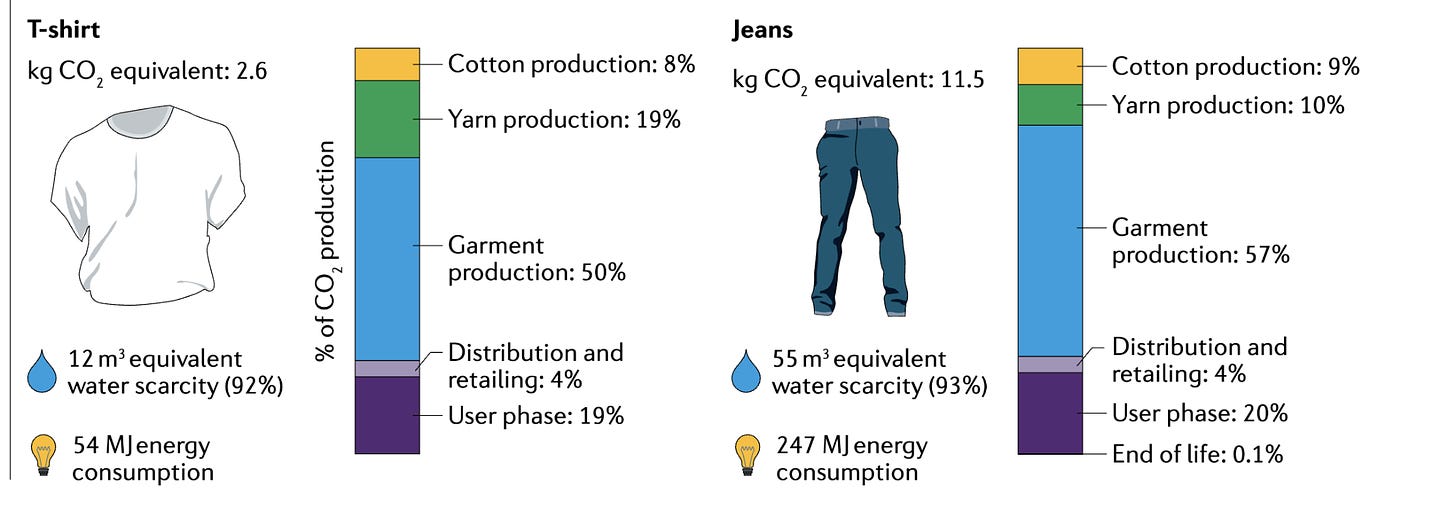Look at Shein from the perspective of a Recommender Systems researcher and a B2B SaaS builder.
How Chinese fast-fashion retailer Shein became the most popular brand in the U.S. and produced 7,000 models a day
Upon first discovering Shein, I was struck by its alignment with my professional journey. Throughout my career, I have gained experience in starting an apparel brand from scratch, working in e-commerce with recommendation systems (RecSys) as a data scientist, and now focusing on improving operations for B2B SaaS companies. Additionally, I resided in Hong Kong and Shanghai for two years with the aim of gaining a deeper understanding of the Chinese technology industry. I viewed the company through the lens of my varied experiences and it’s technological agility piqued my interest.
The company is also one of the largest technology companies that operate behind the scenes, yet it remains vastly underrated. They have been dubbed the most popular brand of 2022 after research as it was the most-searched brand in 113 countries. The company spends 5-7 days to produce a new piece of clothing, from design to shipment to the customer.
I hope you find the article inspiring; In my opinion, B2B SaaS practitioners should examine Shein's business model as it offers valuable insight into disruptive innovation, not just within the fast fashion industry.
Fast-fashion 101. What it is, and how the industry came to be.
Usually, a fashion brand makes clothes for a specific season. The company spends six months or a whole year to produce a collection from layout to shipment to stores. Zara's innovation was that the company shortened the production cycle, shifting its focus from developing the collection to responding quickly to emerging trends. Instead of 6 months, the company spent up to 5 weeks from layout to delivery to the store. Such an approach minimizes the chances of unsuccessful collections and cuts down on storage costs for unsold items. Zara can produce small quantities of clothing and gauge demand within a week. They gather feedback from sales in stores and sales associates. Zara has over 2,000 stores in 96 countries, and its online sales have steadily grown, helping the company weather the impact of COVID-19. The company recently announced a $1 billion investment in digital distribution channels and online-offline integration, but offline remains the primary source of Zara's sales.
Zara develops and produces only 15-25% of its products before the start of a season, with over 50% created during the season based on current trends. While their items strive for uniformity, there is still room for personalization. Additionally, 40% of the store's offerings comprise basic garments.
The void in online retail that Zara, H&M, and Uniqlo failed to fill a decade ago led to the rise of online D2C brands such as Boohoo, Asos, Princess Polly, Fashion Nova, and others. These brands share similar business models, except for Asos, which also functions as a platform for other designers. They offer affordable, medium-quality clothing, using reduced production and distribution costs to allocate more funds to online advertising.
For example, Boohoo leverages the benefits of online retail by allowing for faster testing of new models. Like Zara, they can produce limited quantities for testing and gather feedback through more formalized methods such as clicks, purchases, and site behavior to better predict demand.
These companies, including Zara, share a common principle: expanding their product line, shortening production time, establishing a logistics network, and offering affordable pricing.
As Zara shifts online, competitors like Asos and Boohoo take the opposite approach. Asos recently acquired the Topshop brand (without stores) for 265 million pounds, and Boohoo purchased Debenhams 55 million pounds.
Brands typically don't rely on one factory for production and instead rely on a chain of contracts and sub-contractual agreements between multiple factories to sew a specific garment. E-commerce relies on quality logistics, so D2C brands choose factories closer to their customers. For example, Boohoo works with suppliers in the UK. At the same time, Asos has a more diverse set of factories in China, Turkey, Bulgaria, India, the UK, and Sri Lanka, with China being the dominant supplier. Zara's factories are mainly located in Southern Europe and North Africa. These companies utilize third-party ERP systems such as SAP to manage purchasing and production.
Fast-fashion 3.0 and decentralized supply chain
Many writers exaggerate Shein's significance, referring to it as the GPT-3 of fashion, the TikTok of e-commerce, or a combination of Apple and Amazon. I want to approach it from a different perspective. Just like how Uber operates as a taxi service without owning any cars, Shein has proven that you can create a vertically integrated production system without having an actual factory.
The secret to its success:
A decentralized production setup
An application that modulates its output based on the production line's workload and consumer behavior.
Influence-marketing that drives traffic to the platform.
Tax incentives for exporting goods from China boost sales.
Distributed production system
Shein's competitive edge is its supply chain management system, which links all contractors to user behavior on the site and app. This allows Shein to accurately determine what needs to be produced, which factories have the capacity, and where to allocate orders.
While many clothing manufacturers in China have evolved from OEM (original equipment manufacturing) to ODM (original design manufacturing) and then to OBM (brand manufacturing), most of them reach customers through third-party platforms such as Amazon and AliExpress, instead of going directly to market like Shein.
Shein's manufacturing process utilizes both types of suppliers: OEM suppliers create straightforward designs, while ODM handles both design and production. The designer suppliers present selected images to Shein's internal buyers for approval. After the buyer and their manager choose a final group, the sample creation process may involve multiple changes.
Both types feed into Shein's manufacturing execution system (MES). Shein requires all its partner factories to use its MES software. All details, such as materials, pricing, and communication, must be recorded in the MES system, which some suppliers may find problematic as the information remains in Shein's records even if the deal doesn't come to fruition and can be used for production elsewhere.
Shein prioritizes working with small suppliers over large ones. Order notifications are sent to the factories, similarly to how Uber sends orders to its drivers. Although there's still a minimum production requirement, the system provides greater flexibility, and the majority factories are within a two-hour radius of Guangzhou.
This is not Shein, but this is what modern Chinese collaboration and data management software look like for the factory. Source Black Lake
Nine years ago, factories in China were not equipped with advanced digital technology, making the integration of software for Shein easier. According to Zhongtai Securities, Shein assesses its suppliers with excellent efficiency through a scoring system. The supplier's score is based on 40% factors such as timely procurement and delivery, inventory and delivery performance, defect rate, and the success rate of new products. The order volume determines the remaining 60%. The suppliers are divided into five levels, with the bottom 30% of the lowest tier removed.
An application that updates output based on production line load and user behavior
Shein uses digital signals such as likes, views, and purchases to drive its recommendation system, which is directly linked to its production and stock management. In contrast, traditional brick-and-mortar businesses receive feedback mostly offline. This allows Shein to introduce 10,000 of new products daily, even before they are manufactured. According to information found online, the company takes 5-7 days to produce an item and maintains a 15-20 day inventory safety stock, compared to the industry standard of 90-plus days at 3x to 6x the safety stock.
Shein's low production volumes and fast sellout rate allow it to adjust to market demand quickly. A product that sells out in a day can be re-stocked within five days, allowing suppliers to produce 10,000 pieces on the next production run. By comparison, Boohoo publishes 400 SKUs a day on its website and app. This minimizes the risk of having excess inventory, reducing the need to destroy clothing.
Any retailer calls itself a technology company, but Shein has the advantage of creating a clothing chain from scratch and can provide personalization to the customer from the marketing message to the garment itself.
There has been much discussion about the extent to which Shein's manufacturing is automated. Although its management software is automated, the actual clothing production process involves manual labor. This makes sense considering Shein's low-profit margins and initially small order volume, making it less attractive for more significant, high-tech factories that cater to well-known brands.
Shein is formless, and it's as if it doesn't even have any style. It mirrors what is already on the market based on social media monitoring, competitors, and the level of its designers. Designs are created within 36 hours. Social trends generate hype before the item has even been produced by Shein. Then their products leverage that hype to build more hype but this time specifically around their brand. If you see something trendy – that should be on Shein.
Treat Clothing as Content
We love clothes (fashion is our No. 1 entertainment purchase, above the dining, video games, and music), but we’ve been veering away from the “rules” of style for a long time. We also buy with feelings in mind; more than any other generation, we take it personally that the brands we patronize reflect our social values . Shein combines media and experiences, entertainment and content the user produces with data.
The future of fashion is more circular, social, and fun.
Like other players in the fashion industry, Shein, such as Fashion Nova and Boohoo, leverages a network of young women and numerous micro-influencers to expand its clothing brand via hashtags like #SheinGal. The company reposts content from its 21 million followers on Instagram, providing the micro-influencer an added boost in subscribers.
In addition, Shein offers a trade to selected models, providing them with free clothes in exchange for posting a discount code on their page. The company also operates a general affiliate program for bloggers, allowing site owners to earn a 10-20% commission on every purchase made through their posts.
Shein started working with Influencers back in 2011. The company is constantly adapting traffic sources; for example, Pinterest was the primary traffic source in 2013-2014. Shein has been more aggressive than other brands on TikTok and Instagram. As of October 15, 2021, #shein has 15.7 billion views on TikTok. By comparison, Nike has 15.3 billion and Zara 5.5.
Working with traffic in different geographies is difficult so they partner with influencers agencies in specific locations. You can learn more about working with agencies in this case study on the Philippine market.
Shein selects influencers independently but is guided by basic engagement metrics (likes, views, subscribers, demographics)
The agency is responsible for facilitating clothing fittings, customer reviews, Instagram Story design and, various TikTok filters, Youtube videos.
Shein left the marketplaces entirely three years ago. An exception was made for India, where Shein was banned in 2020 and returned via Amazon. All traffic is landed towards proprietary application or website. In Q2 2022, Shein's 6.8 million mobile installations in the US surpassed Amazon's, with a 13% increase from the previous month. Although Amazon had a higher MAU in Q2, the gap between them was closing. Shein's DAU in Q2 was over 30 million, with a growth rate of 15%.`
Tariff loopholes
Shein's sales growth in the US was boosted by tax cuts in China and the US and had a tariff loophole that allowed it to bypass US import duties that its competitors have to pay, which some believe is crucial to its low prices. In response to US trade restrictions on China in 2018, China reduced export taxes for companies that sell directly to consumers, like Shein. Despite efforts by President Trump to reduce Chinese imports, Chinese imports increased to $265 billion during his presidency. Shein also has an advantage in the US, where parcels worth less than $800 have been tax-free since 2016. Shein's T-shirts from China are exempt from the standard 16.5% US tax and 7.5% Chinese duty. Any company with a production facility in China can take advantage of these exemptions if they sell directly to customers. However, Zara cannot do so as it sells to stores, not individuals.
History of the company
Shein's remarkable growth has put it on the radar of big-name competitors like Amazon and Zara, despite its relatively low profile and mysterious founder. Unlike its local peers, Shein is known for its unusual lack of public information on the founding team.
Chris Xu, also known as Yangtian Xu, is the founder of Shein. Born in 1983 in China's Shandong province, Chris studied international trade in college and briefly worked in an online marketing company before setting up his first e-commerce venture. Despite the first venture's failure, he later teamed up with a group of trusted executives, including Miao, Gu, and Ren, to start Shein in Nanjing in 2008. All three executives are estimated to be worth over $5 billion based on their 7.6% stakes in the company.
Chris's background in search engine optimization and his experience in cross-border e-commerce played a crucial role in Shein's success. He founded Shein in 2008, but the company only got its present name and moved its production to Guangzhou in 2015. Until 2014, Shein did not have its supply chain; instead, it purchased goods directly from the Shisanhang Wholesale Clothing Market in Guangzhou to meet incoming orders.
Despite Shein's success, Chris remains out of the public eye and has never granted a press interview, in line with other successful fashion industry leaders like Amancio Ortega of Zara.

Financials
From 2019 to 2022, Shein’s performance has exploded. In 2020, its GMV exceeded $10 billion for the first time, with a growth rate of 250%. In 2021, this figure reached $20 billion, while the self-operated revenue was approaching $16 billion. Shein’s business isn’t about healthy margins, which was around 6% last year and slightly decreased in the first half of this year. As of the year's first half, Shein's global market ATV was $75, compared to $50, $60, and $70 in the past three years. However, the increase in ATV did not significantly improve the profit margin.
The company has not officially announced the early rounds, but CrunchBase names JAFCO Asia, Greenwoods Asset Management, IDG Capital, Sequoia Capital China, Tiger Global, and Xiaomi founder Shunwei Capital among its investors. In the last round, Shein was valued at $100b. Still, investors looking to sell stakes in Shein are evaluating bids at discounts of about 30 percent to its $100 billion valuation in April, according to people familiar with the matter, amid concern about the Chinese fast-fashion giant’s slowing growth.
While some current shareholders in the private company are considering cashing out ahead of a future initial public offering, the valuation spread between buyers and sellers remains a hurdle to any trade. Shein told existing investors during a fundraising round earlier this year that it plans to have an IPO in the US as soon as 2024. In light of the upcoming IPO, Chinese fast-fashion giant Shein has hired former Bear Stearns investment banker Donald Tang as executive vice chairman.
Global expansion and mitigation of the risk of taxation
Shein is planning to open a new 1.8 million square foot distribution center in Southern California by the spring of 2023 and is also considering a third distribution center in the Northeast. This move comes as part of Shein's strategy to reduce shipping times and costs and to maintain its pricing advantage over competitors. However, the development of a US distribution network could also lead to new charges, such as tariffs on bulk inventory and potential challenges in maintaining profit margins due to being unable to make small, almost-on-demand batches of garments.
The pricing advantage Shein has over competitors may narrow over the time as the company looking for the ways to increase the margins. Shein's low prices may not be sustainable if tax policies change in China, Europe, or the US. However, attacking Shein through brand building may be effective as the company may not be focused on this aspect. To mitigate the risk, Shein is opening its first permanent store in Tokyo and pop-up stores in Brazil, New York, London, Sydney, and Philipinnes. The primary aim of the stores is to attract potential customers and influencers to try on clothing and share their outfits with their social-media followers. The store in Tokyo operates through the app or website, where customers can make purchases by scanning QR codes. The pop-up stores will last 2 to 7 days, allowing shoppers to try clothing in person before purchasing through the Shein app.
Fashion retailers have been dabbling with various versions of omnichannel strategies for over a decade, but no model has stood out from the rest. Paricurlly, for Shein, that would mean the following:
Customer behavior: If Shein's research shows that customers prefer to try on clothing before purchasing or enjoy the in-person shopping experience, investing in bricks-and-mortar may be worth it.
Brand image: Having physical stores can enhance a brand's image and allow customers to engage with the brand in person.
Cost and profit: Bricks-and-mortar stores can be expensive to set up and maintain, but they can also generate substantial profits if done correctly. Shein should consider the cost-benefit analysis of physical stores.
Competition: If Shein's competitors have a solid physical presence, investing in bricks-and-mortar may be necessary to remain competitive.
Customer acquisition: Physical stores can be a low-cost way to attract new customers, mainly if Shein's target market includes younger consumers who may be more likely to engage with the brand in person.
Shein store in Tokyo. Link
If Shein is a Chinese company, why has the model not skyrocketed in China?
While the concept of flexible production is not novel, previous similar initiatives have been confined to China. The local e-commerce market is highly competitive, but the global market offers a supply chain advantage and better access to and relationships with suppliers. The Shein model is just the start of the new wave of Chinese consumer products making their way into the global market.
One such example is Ruhnn, a marketing agency that incubates influencers. In addition to other offerings, the company assists influencers in launching their own clothing brands. It only takes the company one week to produce its stock keeping units (SKUs), and despite being in operation for eight years, it successfully went public and completed an initial public offering (IPO), but later became private again. Unlike Shein, which operates through a mobile app, Ruhnn solely relies on influencer bloggers for distribution. Ruhnn also employs agile production and collaborates with a network of factories that have integrated the necessary SaaS tools.
Another example of this flexible factory-brand model can be seen in Redcollar Group, a Qingdao-based men's suit manufacturer. With just a few taps on their app, customers can place an order for a tailored jacket, and a courier will come to take their measurements. In just ten days, they will receive their custom-made jacket.
It's worth noting that China still dominates the global textile market, exporting $109.9 billion in textiles and $158.4 billion in finished clothing products annually. From the perspective of MES software, the clsosest one would be Smart Fabric, a product offering a dynamic fabric production model without owning its factories. The company uses its software to divide large orders and directly coordinate with hundreds of small weaving and dyeing factories. Smart Fabric can quickly determine idle factories using the software and allocate orders accordingly. Tencent and Sequoia China back the company.
Shein's success naturally spawns imitators and challengers. But the majority of similar Chinese products choose to target the international market rather than the overflooded domestic market.
Known as China’s Zara, Zibuyu sells fast fashion items such as garments and shoes to overseas users through third-party e-commerce platforms, including Amazon, AliExpress, and Wish. Hua Bingru and Wang Shijian founded Zibuyu in the eastern city of Hangzhou in 2011. Initially, the company sold women's clothing through its Youchu store on Alibaba's popular Tmall online mall. However, in 2014, Zibuyu shifted its focus to cross-border e-commerce targeting customers in Europe and America. The company achieved RMB 201 million ($ 31 million) profit on top of RMB 2.3 billion in revenue in 2021, compared with RMB 114 million profit on RMB 1.9 billion in revenue in 2020.
The Chinese startup Quanliang Quansu, which means "Full Volume, Full Speed", produces sporting goods under the brand name Shein. It has raised $100 million in funding from investors such as Sequoia Capital, IDG Capital, and Today Capital.
Cider, a startup with a demand-driven marketplace, has raised $130 million in funding from well-known investors such as a16z, DST Global Partners, IDG Capital, and MSA Capital. Cider founder, Michael Wang, previously co-founded YCloset, often considered the Rent the Runway of China.
With its proprietary software interconnecting manufacturing partners and thousands of designs emerging each week with the help of its big data and AI operations, it makes sense that the company’s greatest competition could come from a tech behemoth, like Alibaba, or ByteDance, for example.
TikTok-owner ByteDance has launched the e-commerce site Dmonstudio to compete with Shein. However, the project was shut down after 101 days, potentially due to weak user adoption and supply chain issues. The closure may indicate a shift in ByteDance's e-commerce strategy and a focus on more asset-light ventures like Douyin Box and the recently launched Fanno e-commerce app.
Another Chinese giant, Pinduoduo, is taping the market with Temu. It’s a new e-commerce platform offering a curated product selection. The app does not have the "team buying" feature like Pinduoduo, and its website displays items grouped by categories that customers can buy by clicking on. Pinduoduo poses a threat to Shein due to its financial and skill resources.
AllyLikes, a fashion site under another tech giant Alibaba, sells products from dresses to earrings with prices ranging from a few dollars to over $30. The site emphasizes its ability to list new styles quickly and has over 500 arrivals per week. Alibaba is recruiting influencers to promote the brand and offering perks such as sponsored gifts and 50% commissions.
The business model is not limited to China, but a few startups are emerging in India as well, where Shein is formally banned. Notable examples includes Gymsquad and Virgio, new fashion startup founded by the former CEO of Myntra and the former SVP of Fopcart is aiming to create a fast fashion brand with a tech-led, design-forward approach. Both companies will use the consumer-to-manufacturing model.
What this means is that we will see more producst tt:s on the surface looks like a direct-to-consumer company, while it’s actually a marketplace of global factories that makes it possible for users to have more selection than Zara, at the price point of Forever 21, on-demand, and with minimal waste.
Sustainable future
The fast fashion industry, embodied by companies like Shein, Zara, and Uniqlo plays a significant role in global warming. With over 100 billion clothing items produced each year, it's becoming increasingly difficult for consumers to shop sustainably. To combat fast fashion, companies need to be more transparent about their sustainability efforts and recognize that it's a journey, not a destination. However, many companies, including H&M, have faced criticism for greenwashing, misleading consumers about their environmental impact through initiatives such as recycling drives and "eco-friendly" clothing collections.
Consumers are facing a dilemma with fast fashion, as on the one hand, 58% of them attempt to extend the life of their clothes for environmental reasons, but on the other hand, 54% believe that the quality of contemporary fashion leaves much to be desired. This frustration is compounded by the recent discovery of harmful chemicals in products from SHEIN. A study of 47 items from the company revealed that 7 items contained levels of dangerous substances such as phthalates and formaldehyde that exceeded European standards, with 15 items containing levels that raised concerns. This highlights the need for fast fashion companies to utilize their resources and innovations to establish a positive reputation and legacy within the industry.
The fashion industry takes a heavy toll on the environment. Clothing production consumes one-tenth of all water used industrially, resulting in 20% of the world's wastewater — much of which is too toxic to be treated and reused. The most environmentally harmful stages of clothing production are the extraction of raw materials and fabric manufacturing. n developed countries, a person consumes almost 26 kilograms of textiles and throws away about 11 kilograms of clothing per year. When producing a T-shirt and a pair of jeans in sizes 40-42, growing cotton accounts for 88% and 92% of the total water footprint. According to a McKinsey study, two-thirds of shoppers prefer a brand that uses lean manufacturing practices.
Shein, a fast fashion company, has launched a $50 million fund to tackle waste and offset its environmental impact. Sustainability advocates have long warned that fast fashion is causing substantial harm to the environment and conditioning shoppers to develop a throwaway culture. However, others see Shein’s scale playing a positive role, where small changes can have a massive impact. The company claims that introducing thousands of new items a day, producing goods in small batches, and then waiting to see how consumers respond before ramping up production is a role model for other clothing manufacturers. However, the details of the assembly lines are hidden from the public view. Other sites and brands agree that on-demand clothing production will give the company a strong competitive advantage.
In 2015, Amazon published a patent for flexible clothing manufacturing. As the engineers conceived it, a textile printer would print the fabrics needed to make the garment. Next, the fabric is cut and assembled according to the finished patterns. Cameras and computer vision algorithms control it.
In my view, Shein and its competitors have the potential to boost the pre-order model and make clothing production more environmentally friendly by reducing unsold goods. The key idea is that there is no need to sew and design clothes before displaying them on the site. By using a recommendation feed and improving the connection to production, tailoring and logistics can be optimized.
As a visionary example:

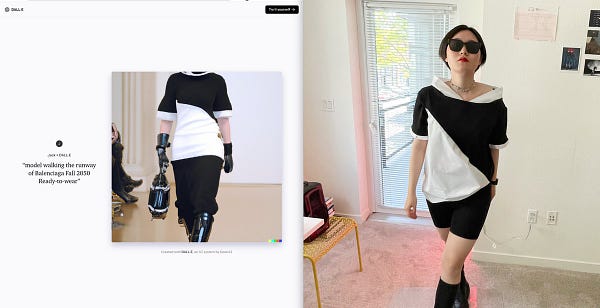
When it comes to sustainable fashion, overconsumption is a significant issue. People often buy more clothing than they need, which leads to a lot of it getting thrown out. This problem is exacerbated by the fact that a significant portion of clothing purchased online is returned, and a significant portion of those returns end up in the waste stream. While many people claim to care about sustainability, their actions do not always align with their words. This is partly because sustainable fashion often comes with a higher price tag and is thus less accessible to people not in a privileged social or economic position. In short, while many people may claim to care about sustainability, the reality is that affordability and appearance often take precedence over environmental concerns. We may not be able to discourage people from buying inexpensive clothes, but we can enhance their experience so that they can find emotional and social fulfillment through other means.





